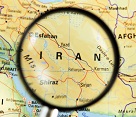A Symbol of Incomplete and Unequal Development
Lake Urmia, one of the most important ecosystems in Iran and Western Asia, was, until the 1990s, the second-largest saltwater lake in the Middle East and the largest inland lake in Iran. It was not only a vital ecological reservoir but also an economic, environmental, and cultural lifeline for millions in East and West Azerbaijan provinces.
In this context, the Urmia Lake Causeway project, which aimed to connect the two provinces via the shortest route, was launched under the banner of development and improved connectivity. However, instead of achieving sustainable development, due to engineering design flaws, the neglect of environmental assessments, and discriminatory centralized policies, it became one of the key contributors to the drying of the lake and the social and environmental crisis in the region.
Technical Specifications of the Causeway
Length: Approx. 1,709 meters
Width: Approx. 26.7 meters (includes lanes for both directions and future railway)
Structure Type: Prestressed concrete bridge with 19 spans
Height from water surface: Approx. 20 meters
Project start: 2003
Opening: 2008
Part of: Tabriz–Urmia Highway
Total length of embankments: Over 10 kilometers (combined)
History and Construction Process
The idea of constructing the causeway dates back to the 1960s, but due to factors such as the marginalization of Turkish-speaking regions by central governments, budget limitations, and structural neglect of balanced development, the project remained dormant until 2003. Its implementation began only after public demand in the region became a political pressure point.
This 40-year delay cannot merely be attributed to technical or financial issues. Many local experts and political activists see it as a result of the center–periphery discriminatory dynamics and disregard for the needs of non-central regions of Iran, especially the Azerbaijani-speaking areas.
Disastrous Environmental Impacts
One of the major shortcomings of the project was the neglect of basic environmental engineering principles. While similar global projects undergo strict ecological assessments, this bridge was constructed without thorough environmental evaluations.
Key negative environmental impacts include:
1. Blocking natural water flow: The embankments on both sides of the lake have only a single narrow opening for water passage. This significantly disrupted the natural water circulation between the north and south of the lake.
2. Increased evaporation and salinity: Poor water circulation led to stagnation and higher evaporation, drastically increasing salinity levels, which resulted in the extinction or migration of many species.
3. Biodiversity collapse: The unique species Artemia urmiana, native only to this lake, faced extinction. Additionally, migratory bird routes were disrupted.
4. Salt storms: As vast areas of the lakebed dried, salt storms became more frequent, directly impacting public health (causing respiratory and eye diseases) and agriculture.
5. Loss of livelihoods: Occupations such as fishing, lakeside agriculture, and seasonal tourism were severely damaged or completely wiped out.
Bridge: Connection or
Engine of Destruction?
Although the original aim of the project was to shorten the distance between Tabriz and Urmia, poor technical design resulted in a structure that acts more like a dam than a bridge—suffocating the lake.
The embankment is so dense and extensive that environmental experts refer to it as the “Wall of Death” for the lake. Despite numerous warnings from academics and environmentalists, there was never any serious intent to revise or redesign the causeway or improve water flow.
Centralism and Structural Discrimination
Any analysis of the Urmia causeway project is incomplete without addressing the role of Turkish-speaking regions in national planning. The experience of this project revealed that:
National decisions are often made in Tehran with little or no consultation with local elites
Budget allocation and resources are driven by central political priorities
Environmental concerns in regions like Azerbaijan are often ignored compared to central provinces
This dysfunctional structure has eroded public trust in the government and left locals skeptical of so-called “development” projects.
Rather than becoming a symbol of progress, the Urmia Lake Causeway now stands as a testament to unbalanced development, environmental neglect, structural discrimination, and the destruction of local resources. Rebuilding public trust and restoring the lake will require deep-rooted reforms in the country’s development approach, true decentralization, and a return to sound engineering practices.
Strategic Recommendations
1. Reconstruct the bridge and embankments to restore natural water flow between both sections of the lake
2. Conduct comprehensive ecological studies before any construction in environmentally sensitive zones
3. Ensure genuine participation of local experts in decision-making and oversight
4. Decentralize development planning and allocate resources based on regional justice
5. Launch national awareness campaigns on the lake’s condition and the role of the bridge
